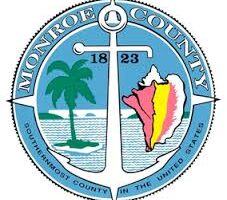Struggling Florida citrus growers face tough decisions
WINTER HAVEN, Fla. (AP) — Although the 2017-18 citrus harvest has barely begun, growers are already planning for the 2018-19 season, and they have critical decisions to make in the coming months that will affect next season’s crop and perhaps others in years to come.
Growers say all but the luckiest among them will profit in 2017-18. Because hurricane-force winds hit the state’s entire citrus-producing area south of Interstate 4, there aren’t many growers who escaped major damage.
Irma destroyed more than 50 percent of this season’s oranges, grapefruit, tangerines and tangelos. Before Irma, Florida’s citrus industry battled greening, a devastating disease.
The latest official U.S. Department of Agriculture survey released Nov. 9 shows 50 million boxes of oranges, a 27 percent drop from the 2016-17 season, and 4.65 million boxes of grapefruit, a 40 percent decline from last season. Growers expect those numbers to decrease through the end of the harvest in May as storm-damaged trees drop fruit before harvest.
“If I had to take a guess, I would say we’ll end this season with 40 million boxes of oranges,” said Allen Morris, an agriculture economist and consultant with decades of experience in Florida citrus.
That would mean a drop in U.S. supply of orange juice, most of which in past seasons has come from Florida oranges, Morris said. Each year, about 95 percent of the state’s orange crop goes to juice.
“We will survive, but imports will play a critical role in our survival,” he said.
The Ledger reports that when Florida will recover as the major supplier of orange juice to the U.S. market depends on when the state’s citrus trees will return to pre-Irma production.
There’s little question that damage caused by Irma to most of Florida’s 62 million citrus trees will affect future crop production at least through the 2018-19 season. That was growers’ experience following the 2004 and 2005 hurricanes.
But more than a decade ago, operating a grove was a much cheaper proposition than it is now because growers didn’t have to deal with the fatal bacterial disease citrus greening. Since its arrival in 2005, greening has reduced the state’s annual citrus harvest by more than 70 percent while more than doubling grove-caretaking costs.
Costs have risen because of the additional fertilizer and pesticide applications growers must make to fight greening, said Ariel Singerman, assistant professor of agricultural economics at the University of Florida’s Citrus Research and Education Center in Lake Alfred.
That means it costs a lot more to wait for trees to recover from hurricane damage.
In the 2016-17 season, the average Florida grower spent about $1,800 per grove acre, including fertilizers, pesticides, labor and other inputs, That’s based on an annual statewide survey he conducts every summer after the conclusion of the harvest.
That figure does not include other fixed costs, such as capital expenses; land costs, such as a mortgage; and other management inputs.
Maintaining an adequate level of grove caretaking will be a key challenge for growers this year, Singerman said.
“That is exactly why the Florida citrus industry is shrinking – they (growers) cannot afford the cost of staying in business,” he said. “If a grower has lost 50 percent of his fruit, it’s unlikely he will make a profit.”
___
Information from: The Ledger (Lakeland, Fla.), http://www.theledger.com






No Comment